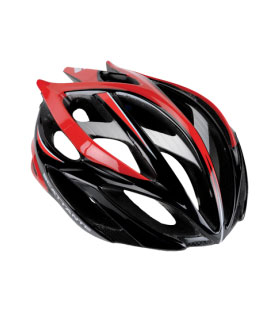
- Afrikaans
- Albanian
- Amharic
- Arabic
- Armenian
- Azerbaijani
- Basque
- Belarusian
- Bengali
- Bosnian
- Bulgarian
- Catalan
- Cebuano
- Corsican
- Croatian
- Czech
- Danish
- Dutch
- English
- Esperanto
- Estonian
- Finnish
- French
- Frisian
- Galician
- Georgian
- German
- Greek
- Gujarati
- Haitian Creole
- hausa
- hawaiian
- Hebrew
- Hindi
- Miao
- Hungarian
- Icelandic
- igbo
- Indonesian
- irish
- Italian
- Japanese
- Javanese
- Kannada
- kazakh
- Khmer
- Rwandese
- Korean
- Kurdish
- Kyrgyz
- Lao
- Latin
- Latvian
- Lithuanian
- Luxembourgish
- Macedonian
- Malgashi
- Malay
- Malayalam
- Maltese
- Maori
- Marathi
- Mongolian
- Myanmar
- Nepali
- Norwegian
- Norwegian
- Occitan
- Pashto
- Persian
- Polish
- Portuguese
- Punjabi
- Romanian
- Russian
- Samoan
- Scottish Gaelic
- Serbian
- Sesotho
- Shona
- Sindhi
- Sinhala
- Slovak
- Slovenian
- Somali
- Spanish
- Sundanese
- Swahili
- Swedish
- Tagalog
- Tajik
- Tamil
- Tatar
- Telugu
- Thai
- Turkish
- Turkmen
- Ukrainian
- Urdu
- Uighur
- Uzbek
- Vietnamese
- Welsh
- Bantu
- Yiddish
- Yoruba
- Zulu
Feb . 15, 2025 10:39 Back to list
for sale mountain bike
For individuals seeking the exhilarating thrill of mountain biking, choosing the right mountain bike is paramount. As an experienced mountain biking enthusiast and certified biking expert, I want to share valuable insights into purchasing a high-quality mountain bike. This in-depth guide focuses on the key factors to consider, ensuring your buying decision is informed, expert-driven, and trustworthy.
Drivetrain and gearing options should align with your riding conditions and strength. Bikes with a single-chain ring setup are simpler, with fewer parts to maintain, offering wide-range cassettes for varied terrain adaptability. Traditional triple-chain systems provide versatility but require more maintenance. Ensure the gear range allows for easy climbs on steep gradients and swift descents. Braking systems impact control on rugged trails. Hydraulic disc brakes offer superior stopping power and modulation under varied conditions, whereas mechanical disc brakes serve as a lower-cost alternative but require more frequent maintenance and adjustments. Fit and comfort cannot be overstated, influencing your overall biking experience. The correct frame size ensures efficiency and comfort, reducing fatigue and potential for injury. Adjustable seat posts provide flexibility during descents and climbs, enhancing control and comfort. Opt for ergonomic grips, a comfortable saddle, and quality pedal systems to match your riding style. When purchasing a mountain bike, test rides are invaluable. They allow you to experience the bike's handling and fit firsthand. Consult with your local bike shop or a knowledgeable biking community for recommendations and reviews, ensuring the bike meets your needs and preferences reliably. In conclusion, selecting a mountain bike involves a multifaceted evaluation of categories, materials, and features, all tailored to your specific biking pursuits. Armed with expert advice, you can navigate the options confidently, ensuring your bike not only meets your riding needs but enhances every outdoor adventure. Such knowledge ensures that your chosen mountain bike is an investment into quality, performance, and endless adventures on the trails.


Drivetrain and gearing options should align with your riding conditions and strength. Bikes with a single-chain ring setup are simpler, with fewer parts to maintain, offering wide-range cassettes for varied terrain adaptability. Traditional triple-chain systems provide versatility but require more maintenance. Ensure the gear range allows for easy climbs on steep gradients and swift descents. Braking systems impact control on rugged trails. Hydraulic disc brakes offer superior stopping power and modulation under varied conditions, whereas mechanical disc brakes serve as a lower-cost alternative but require more frequent maintenance and adjustments. Fit and comfort cannot be overstated, influencing your overall biking experience. The correct frame size ensures efficiency and comfort, reducing fatigue and potential for injury. Adjustable seat posts provide flexibility during descents and climbs, enhancing control and comfort. Opt for ergonomic grips, a comfortable saddle, and quality pedal systems to match your riding style. When purchasing a mountain bike, test rides are invaluable. They allow you to experience the bike's handling and fit firsthand. Consult with your local bike shop or a knowledgeable biking community for recommendations and reviews, ensuring the bike meets your needs and preferences reliably. In conclusion, selecting a mountain bike involves a multifaceted evaluation of categories, materials, and features, all tailored to your specific biking pursuits. Armed with expert advice, you can navigate the options confidently, ensuring your bike not only meets your riding needs but enhances every outdoor adventure. Such knowledge ensures that your chosen mountain bike is an investment into quality, performance, and endless adventures on the trails.
Next:
Latest news
-
The Ultimate Kids' Four-Wheeler Experience
NewsJul.09,2025
-
The Ultimate Guide to Mountain Bikes: Gear Up for Your Ride
NewsJul.09,2025
-
The New Age of Cycling: Electric Bikes for Every Rider
NewsJul.09,2025
-
The Best Kids Bicycles: Ride in Style and Safety
NewsJul.09,2025
-
The Best 3-Wheel Scooters for Kids: Fun, Safety, and Adventure
NewsJul.09,2025
-
Revolutionize Your Ride: Affordable Electric Bikes
NewsJul.09,2025
-
Finding the Perfect Mountain Bike for Every Rider
NewsJul.09,2025



